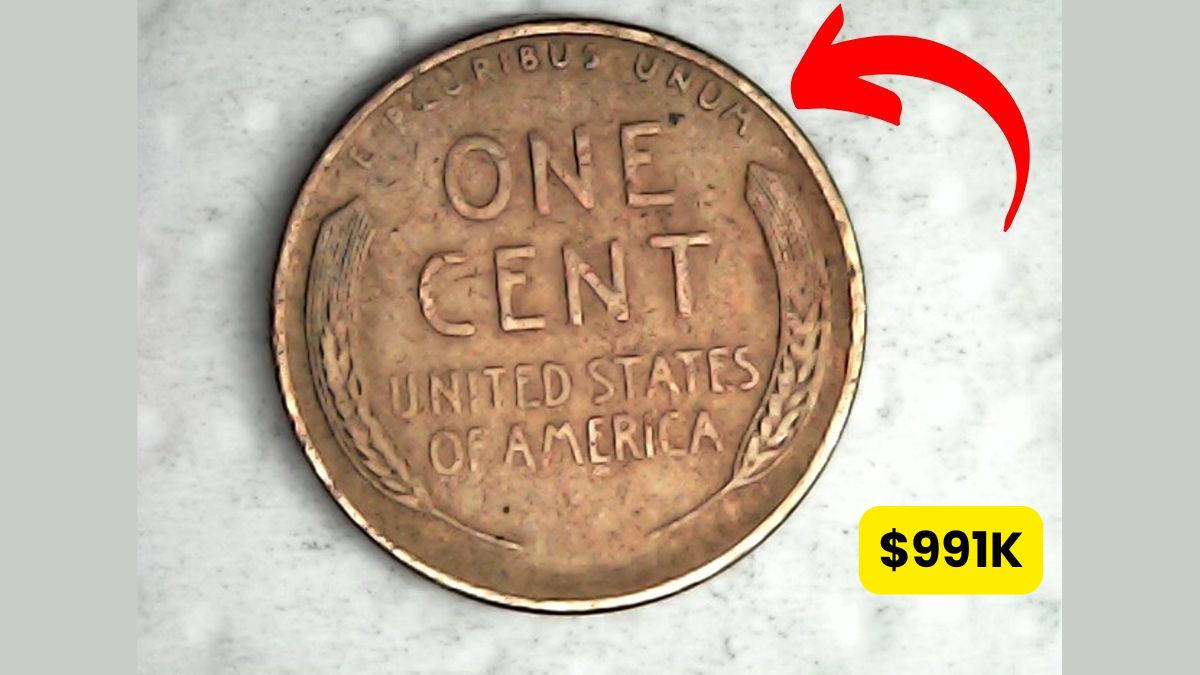Lincoln Wheat Penny Worth $991K: The Lincoln Wheat Penny holds a special place in American coin collecting history. Made between 1909 and 1958, these small copper coins might seem ordinary at first glance. Most of these pennies are worth just one cent—their face value—but certain rare varieties can be worth astonishing amounts of money. The most valuable example, a 1943 Bronze Lincoln Cent, has sold for nearly one million dollars at auction, showing just how precious these rare coins can be to serious collectors.
The Design and Historical Significance
Victor David Brenner created the distinctive design of the Lincoln Wheat Penny. The front (obverse) features President Abraham Lincoln’s profile, while the back (reverse) shows two wheat stalks that symbolize America’s agricultural abundance and unity. This iconic design remained in circulation for nearly five decades before being replaced in 1958 with the Lincoln Memorial design that many Americans are more familiar with today. The wheat penny design coincided with important periods in American history, including both World Wars and the Great Depression.
The 1943 Bronze Penny
During World War II, copper was needed for the war effort, so the U.S. Mint switched to making pennies out of zinc-coated steel in 1943. However, a few copper blanks (called planchets) were accidentally left in the presses, resulting in an extremely rare error—the 1943 Bronze Lincoln Cent. Only about 40 of these mistaken copper pennies are believed to exist today, making them incredibly valuable to collectors. Their scarcity has driven prices to extraordinary levels, with some examples selling for hundreds of thousands of dollars at auction.
Identifying Features of the Rare 1943 Bronze Cent
If you’re curious about whether you might have one of these valuable coins, there are several key features to look for. A genuine 1943 Bronze Lincoln Cent is made of 95% copper with 5% tin and zinc, weighs approximately 3.11 grams, and measures 19.05 millimeters in diameter. These pennies were minted at three locations: Philadelphia (with no mint mark), Denver (marked with a “D”), and San Francisco (marked with an “S”). The Denver and San Francisco versions are even rarer, with the 1943-D Bronze Cent once selling for $840,000 and a 1943-S Bronze Cent fetching $504,000.
How to Test a Potential Rare Penny
If you think you might have struck gold with a 1943 bronze penny, there are several simple tests you can perform. First, verify the date is indeed 1943. Then, try the magnet test—a steel penny will stick to a magnet, while a bronze one won’t. You can also weigh the coin, as a genuine bronze penny will weigh about 3.11 grams compared to the lighter steel version. Remember that counterfeit coins exist, so professional authentication is essential before celebrating your potential windfall.
Other Valuable Lincoln Wheat Pennies
While the 1943 Bronze Cent gets most of the attention, several other Lincoln Wheat Pennies are highly sought after by collectors. The 1909-S VDB penny, which features the designer’s initials and had a limited mintage of only 484,000, is particularly valuable. The 1955 Double Die penny shows a noticeable doubling of the date and lettering due to a minting error. The 1922 No D penny was minted in Denver but lacks the expected mint mark. These special varieties can be worth thousands of dollars in good condition.
Proper Care and Authentication
If you believe you have a valuable Lincoln Wheat Penny, proper handling and storage are crucial to maintain its value. Use acid-free holders or capsules to prevent damage from handling or environmental factors. More importantly, seek professional authentication from respected services like the Numismatic Guaranty Corporation (NGC) or the Professional Coin Grading Service (PCGS). These organizations can verify authenticity and grade the condition of your coin, which significantly affects its value in the collector market.
The Enduring Appeal of Wheat Pennies
The Lincoln Wheat Penny represents more than just currency—it’s a tangible piece of American history that spans multiple generations. While finding an extremely valuable specimen like the 1943 Bronze Cent is highly unlikely, many collectors enjoy searching through old pennies hoping to find moderately valuable specimens to add to their collections. This treasure-hunting aspect adds to the fun of coin collecting and keeps interest in these vintage coins alive decades after they ceased to be produced.
Disclaimer
This article is for informational purposes only and should not be considered investment advice. Coin values can fluctuate based on market conditions, collector interest, and authentication status. If you believe you have a rare coin, consult with a professional numismatist or coin dealer before making any decisions regarding its sale or purchase. Counterfeit coins are common in the collector market, so professional authentication is strongly recommended before paying significant sums for any purportedly rare coin.






